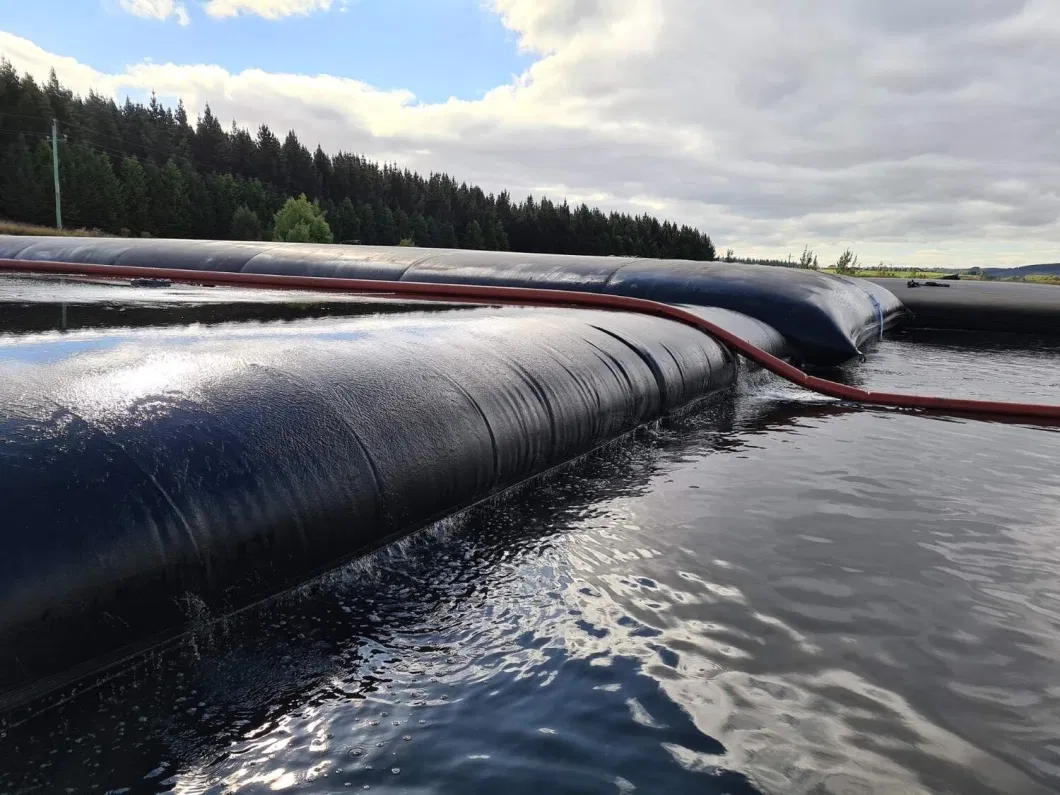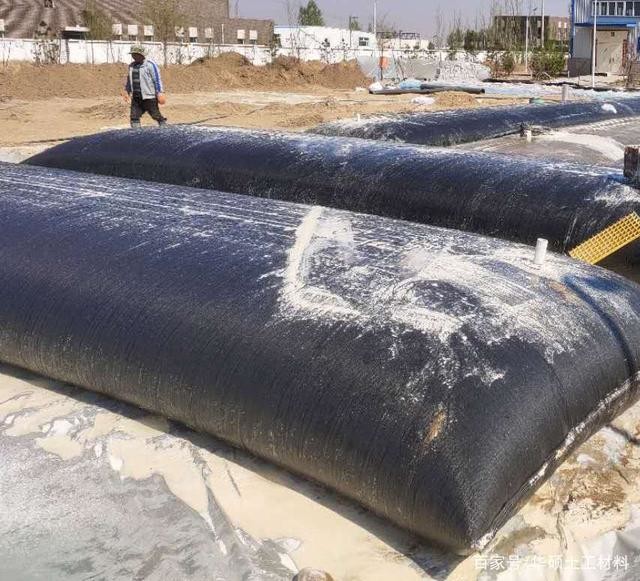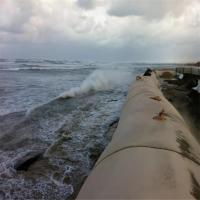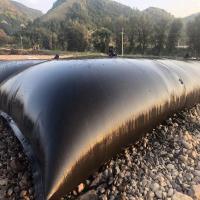| Sign In | Join Free | My himfr.com |
|
| Sign In | Join Free | My himfr.com |
|
| Ask Lasest Price | |
| Brand Name : | OEM |
| Model Number : | geotube |
| Certification : | ISO certificate |
| Price : | USD0.63-USD2.73 per square meter |
| Payment Terms : | L/C, D/A, D/P, T/T, Western Union, MoneyGram |
| Supply Ability : | 20000 Square Meter/Square Meters per Day |
| Delivery Time : | 7-12 working days |
Description of Woven Geotextile Sludge Dewatering Geotube
PP or PET woven geotextile geotube is geosynthetic Containers have
been used as an alternative, sustainable solution for coastal
protection for more than 20 years. They have a smaller footprint
and lesser impact on the
environment than hard structures, such as rock and concrete, and
are fabricated using specially engineered materials, to meet
durability and environmental requirements.
Property of Woven Geotextile Sludge Dewatering Geotube
1).High tensile strength(70-200KN/m)
2).High seam strength(>80%)
We use the domestic leading seaming technology. The edge seams of
geotube have more strong tensile strength than the overseam sewing
technology, which is very good to prevent geotube be filled into
burst out.
3). High UV resistance(>90%/500h)
4). High resistance to acid and alkali (PH 2-13)


The list of materials that can been dewatered by geotextile tubes
includes:
Municipal water treatment and wastewater sludge
Contaminated dredged material
Marine dredgings
Agricultural animal waste
Fine-grained, inorganic industrial sludge
Construction dewatering
Shale fracking waste water
 Advantages:
Advantages:This knowledge technology have a three-step process:
Step 1: Filling -- Sludge (dredged material) is pumped into the
Geotube container. Environmentally-safe polymers are added to the
sludge, which makes the solids bind together and water separate.
The TenCate Geotube?container's unique fabric confines the fine
grains of the material.
Step 2: Dewatering -- Clear effluent water simply drains from the
Geotube container through the small pores in the specially
engineered textile. This results in effective dewatering and
efficient volume reduction of the contained materials. And this
volume reduction allows for the repeated filling of the Geotube
container. Over 99% of solids are captured, and clear filtrate can
be collected and recirculated through the system. The decanted
water is often of a quality that can be reused/returned for
processing or returned to native waterways without additional
treatment.
Step 3: Consolidation -- After the final cycle of filling and
dewatering, the solids remain in the bag and continue to densify
due to desiccation as residual water vapor escapes through the
fabric. Volume reduction can be as high as 90 percent. When full,
the Geotube container and contents can be deposited at a landfill,
remain on-site, or the solids can be removed and land-applied when
appropriate.





|




